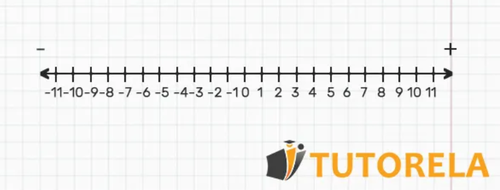The real line looks like this: a horizontal line in which small equidistant vertical lines are inserted.
Real number line

Master addition and subtraction on the number line with positive and negative numbers. Practice plotting points, solving equations, and understanding signed number operations.
The real line looks like this: a horizontal line in which small equidistant vertical lines are inserted.

Characteristics of the number line:
The operations of addition and subtraction can be seen as a horizontal movement on the number line.
All negative numbers appear on the number line to the left of the number 0.
What is the distance between 0 and F?
Let's begin by marking F and 0 on the number line
We can thus determine that:
Therefore, the distance is 0 steps.
Answer:
0
What is the distance between C and H?
We first mark the letter C on the number line and then proceed towards the letter H:
Note that the distance between the two letters is 5 steps.
Answer:
5
What is the distance between F and B?
One might think that as a consequence of the displacement on the axis being towards the negative domain, the result is also negative.
However it is important to keep in mind that here we are referring to the distance.
Distance can never be negative.
Even if the displacement is towards the negative domain, the distance is an existing value.
Answer:
4
What is the distance between D and K?
We first mark the letter D on the number line and then proceed towards the letter K:
Note that the distance between the two letters is 7 steps.
Answer:
7
What is the distance between J and D?
Let's begin by marking the letter J on the number line and then proceeding towards the letter D:
Note that the distance between the two letters is 6 steps
Answer:
6